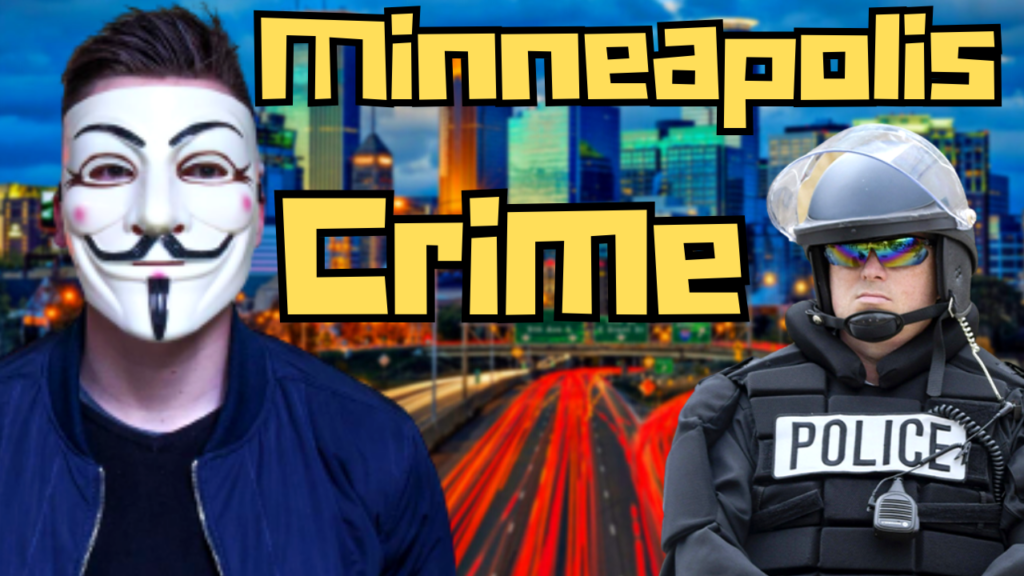How Bad is the Crime in Minneapolis?
Violent crime spiked in Minneapolis during the pandemic, in particular the murder rate in Minneapolis doubled from pre pandemic levels. The city is still struggling with heightened levels of violent crimes including rape, assault, car jackings and home invasions. How bad is the crime in Minneapolis? And is there any hope for the future?
Murderappolis
You don’t get the nickname “Murderappolis” for no reason. This was a term coined back in the mid 1990’s as a result of the crack epidemic, the execution of a police chief, and the violence between drug gangs and police that followed. Fast forward 30 years, Minneapolis is again living up to that nickname after the George Floyd murder and the protests and riots that followed. To add fuel to the fire, it was the start of a global pandemic, covid lockdowns, and the realization of the massive disparities in poverty, education, wealth, and the treatment of minorities among police.

This lead to the defund the police movement, which was actually not supported in the highest crime neighborhoods of Minneapolis. However, the movement and civil rights violations specifically against minorities and people of color by the Minneapolis police was well documented in the Department of Justices 2023 report. You can read the report for yourself and see the disparities of unreasonable force, discrimination against black people and native Americans, and a laundry list of other findings.
All of this lead up to a general distrust of the police in these communities which lead to even bigger problems. Regardless, all of this lead to a massive increase in violent crimes such as murder, rape, robbery, and assault. Other crimes dramatically increased such as burglary, theft, and motor vehicle thefts. It’s important to remember that most of the crime data that you see out there is 2 years old. Crime stats on neighborhoodscout, areavibes and niche.com, they’re all using data form 2021 which as we’ll learn was the height of reported crime within the last few years.
How Bad is the Crime in Minneapolis
Using the most recent data, Neighborhood scout rates safety in Minneapolis a 1 out of 100 – 100 being the safest. With good reason, at the time violent crime was more than 3 times the national average
With total murders of 94 a rate of .22 per 1,000 people, which is also over 3 times the national average. However, the number of homicides was still under the record of 97 reached in 1995.
If you were to look at areavibes, you’d see they rank Minneapolis as an “F” for crime and show Minneapolis has 133% higher total crime than the national average and 230% higher violent crime than the national average. Niche.com gives Minneapolis crime and safety a “C-” and provides some more updated polls from individuals on how safe they feel. Only 7% of respondents reporting they don’t feel safe and more than half of the respondents saying the police are very visible and very responsive.
Again most of the data available is old data, from the height of 2021 and to be fair, many other urban areas experience a spike in crime during the same period.
Is the Murder and Crime Rate Still that Bad in Minneapolis?Â
According to the mayor of Minneapolis, Jacob Frey, violent crime is on the decline. In an April 2023 CBS interview, Frey says the year to date homicides were down 45% and car jackings are down 42%. According to WalletHub Minneapolis saw 5.41 homicides per 100,000 residents in Q2 of 2023. That’s down from 6.35 homicides per 100,000 residents Q2 2022. It’s also down from 8 homicides per 100,000 residents Q1 2021 when the spike in homicides peaked.
Last year Minneapolis officials announced a new data-driven initiative called “Operation Endeavor” to address violent crime in the city. This is a multi-jurisdictional group comprised of uniformed MPD, patrol officers, plain clothes investigators, state and federal law enforcement partners, analysts, prosecutors, violent crime prevention and outreach groups and private businesses. Which officials claim is “working,” but did not provide definitive data to prove that’s the case so far.
Where Minneapolis Crime Ranks Nationally
It could be worse, Minneapolis ranks #12 for the highest homicide rates in the nation. St louis, MO takes the #1 spot, followed by Memphis, TN, Detroit, MI, New Orleans and Washington DC all in the top 5. Kansas City, MO and Chicago, IL filling the # 8 and 9 spots respectively.
One of the biggest issues facing the city is the lack of police officers or people who want to become police officers. City workers are not excluded from a tight labor market which makes finding and recruiting candidates more challenging, but no one wants to be a cop because it’s a dangerous, thankless job, and difficult job to do. Which it is, but we obviously need cops, we need better cops, and we need to improve the way we police our communities.
Community is the biggest resource the police have against crime and solving murders. And if the community loses trust in the police, then crimes, specifically homicides don’t get solved and more importantly, there’s no deterrence by the community to prevent homicides and other crimes in the first place.
Malcolm Gladwell talks about the correlation between the percentage of crimes solved by police and the trust the community has in the police, saying “the most important factor in solving a homicide is the cooperation of the public. If they don’t trust the police anymore, if they think of the police as an occupying force, then you have a problem. The ability of the police to perform their duties is dependent upon public approval of police existence, actions, behavior and the ability of the police to secure and maintain public respect. In a recent Gallup poll, only 90% of black adults said they were confident they had any confidence or trust in the police. The numbers for white Americans are a little bit higher, but they are also at historic lows. How do you solve a homicide in a community where eight out of 10 people don’t trust you.”
The Future of Crime in Minneapolis
It’s going to take years for the public to trust the police again because of everything that’s happened up to this point. If there is a sign of positive change, you could look at the number of encounters involving neck restraints and see those numbers dramatically decline after the 2020 murder of George Floyd. In addition, wealth inequality compounds the problems in our communities. If you don’t own your home, your net worth is lower, you won’t have access to healthy food, daycare, and the education you desire for your children.Â
Then of course less education, leads to even less opportunities, and the problem compounds itself into a cycle of crime and poverty.  The good news is that the state of Minnesota has set aside millions of dollars for first generation home buyers and first time home buyers to help tackle affordable housing and increase homeownership among first generation buyers and people of color.Â
I have several articles about the down payment assistance options available and there are also special grants available in low income and minority census tracts to encourage home ownership throughout Minneapolis. If that’s something you’re interested in, I would encourage you to check out my website for more information.
